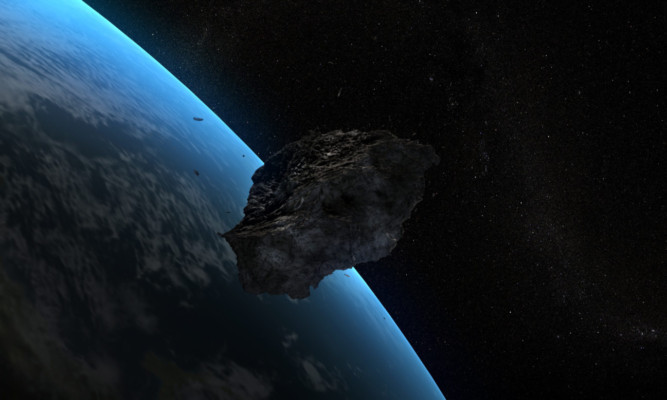Sky watchers will have the chance to see an asteroid big enough to destroy London narrowly miss the Earth.
Scientists are sure there is no chance of the 150ft-wide space rock hitting the planet. But it could come as close as 17,200 miles placing it within the orbits of more than 100 telecommunication and weather satellites.
The asteroid, 2012 DA14, has been closely tracked since its discovery by a Spanish observatory a year ago. It is predicted to reach its nearest point to Earth at around 7.30pm UK time Friday.
Given clear skies, it should be possible to track the rock climbing in the north-eastern sky from anywhere in the UK. DA14 will take two hours to travel between the constellations of Leo and the Plough from 8pm.
Robin Scagell, vice-president of the Society for Popular Astronomy, said: “It will be possible to see it if you know where to look, but just waving your binoculars in the right general direction isn’t going to work.
“The asteroid will be a faint dot of light moving at a steady rate between the stars. It’ll be thousands of times fainter than Jupiter and 250 times fainter than the stars of the Plough.
“The trick will be to find the area in advance and wait for it to come through. You can use the star maps to find exactly the right part of the sky.
“If you hold your binoculars steady you will see this tiny point of light crawling across your field of view in about seven or eight minutes.”
DA14 will climb steeply from a point just below Leo, growing fainter as it travels across the sky. At the point it reaches the handle of the Plough, it will be 35 degrees above the horizon equivalent to three stacked fists an arm’s length away.
DA14 belongs to a dangerous family of near-Earth objects (NEOs) that are small enough to be missed but large enough to cause serious damage.
It was detected in February last year by La Sagra Observatory in southern Spain as it fell under the spotlight of the sun’s rays.
Travelling at between 12,427mph (20,000kph) and 18,641mph (30,000kph) around five miles (8km) a second, or eight times the speed of a rifle bullet the asteroid will fly inside the orbits of high geostationary satellites some 22,000 miles (35,406km) above the Earth.
Astronomer and asteroid expert Dr Dan Brown, from Nottingham Trent University, said: “There are loads of them but you’re talking about a very big area. It would be very unlucky if a satellite was hit.
“The asteroid is more likely to hit some space junk, but most of this is only about a centimetre across and the impact won’t even be noticed.”
He said the asteroid posed no threat to the International Space Station, which orbits at an altitude of only a few hundred kilometres. Precise calculations show there is absolutely no possibility of DA14 hitting the Earth.
But scientists have a good idea of what the effect of such an impact would be because a similar sized meteor devastated a remote region of Siberia in 1908.
Exploding a short distance above the ground over Tunguska, the object generated a blast 1,000 times more powerful than the atom bomb dropped on Hiroshima.
Forest was completely flattened over an area of 830 square miles (2,150 sq km).
